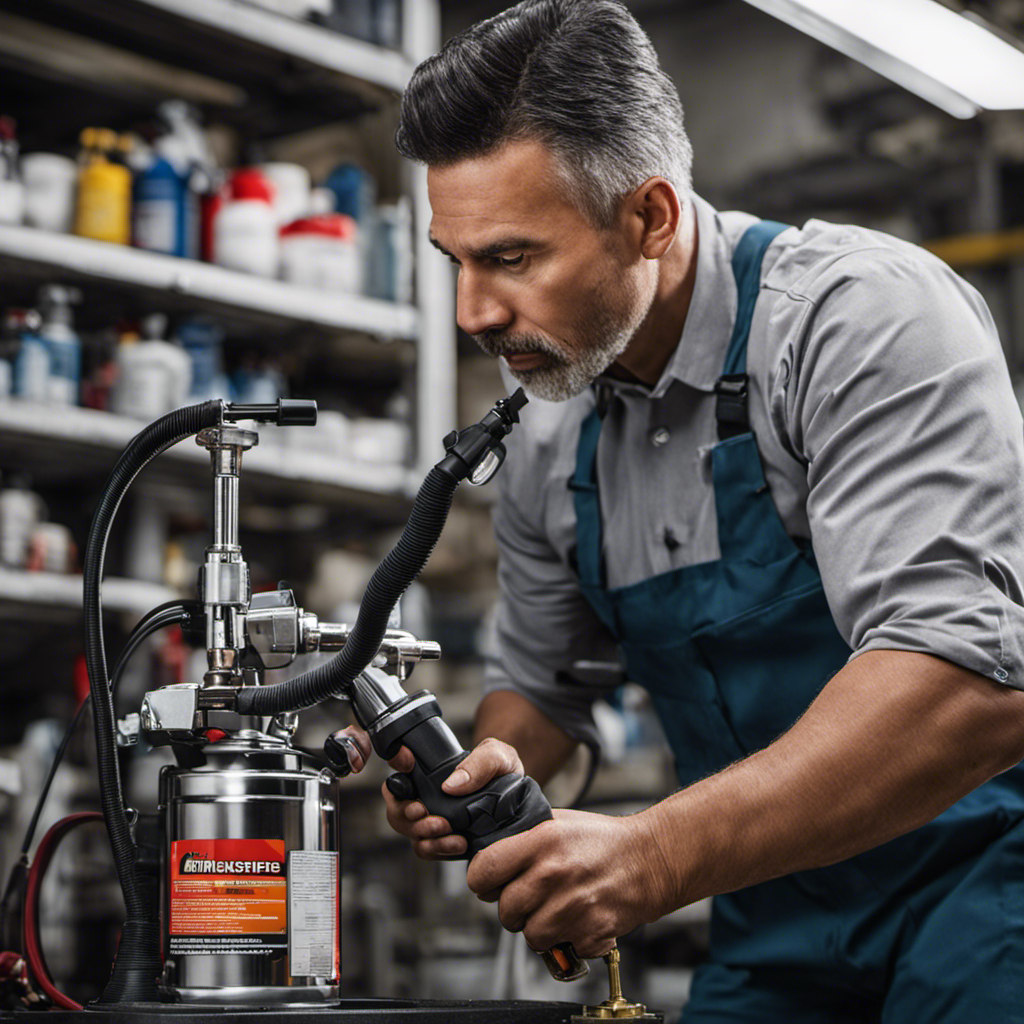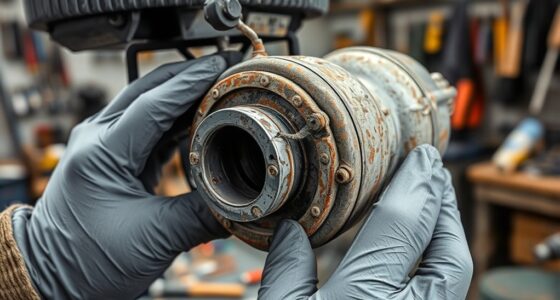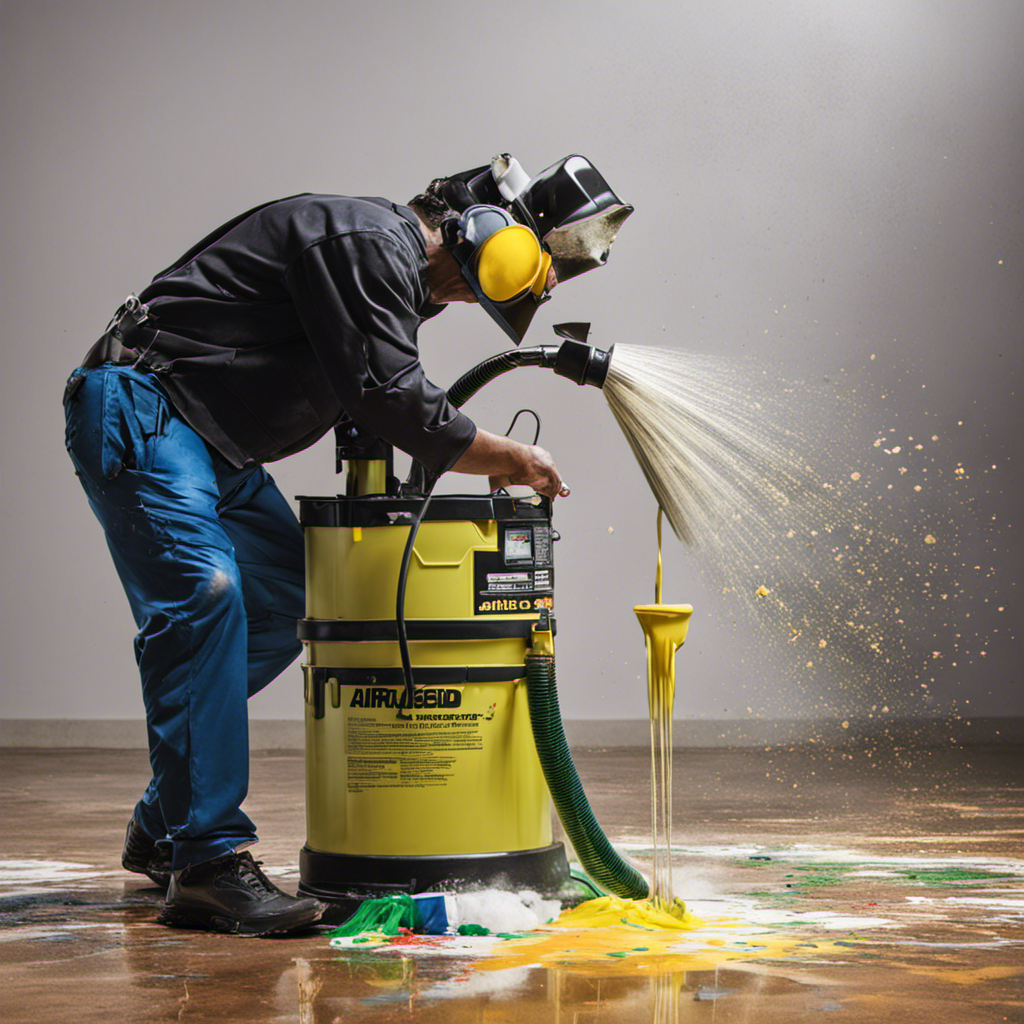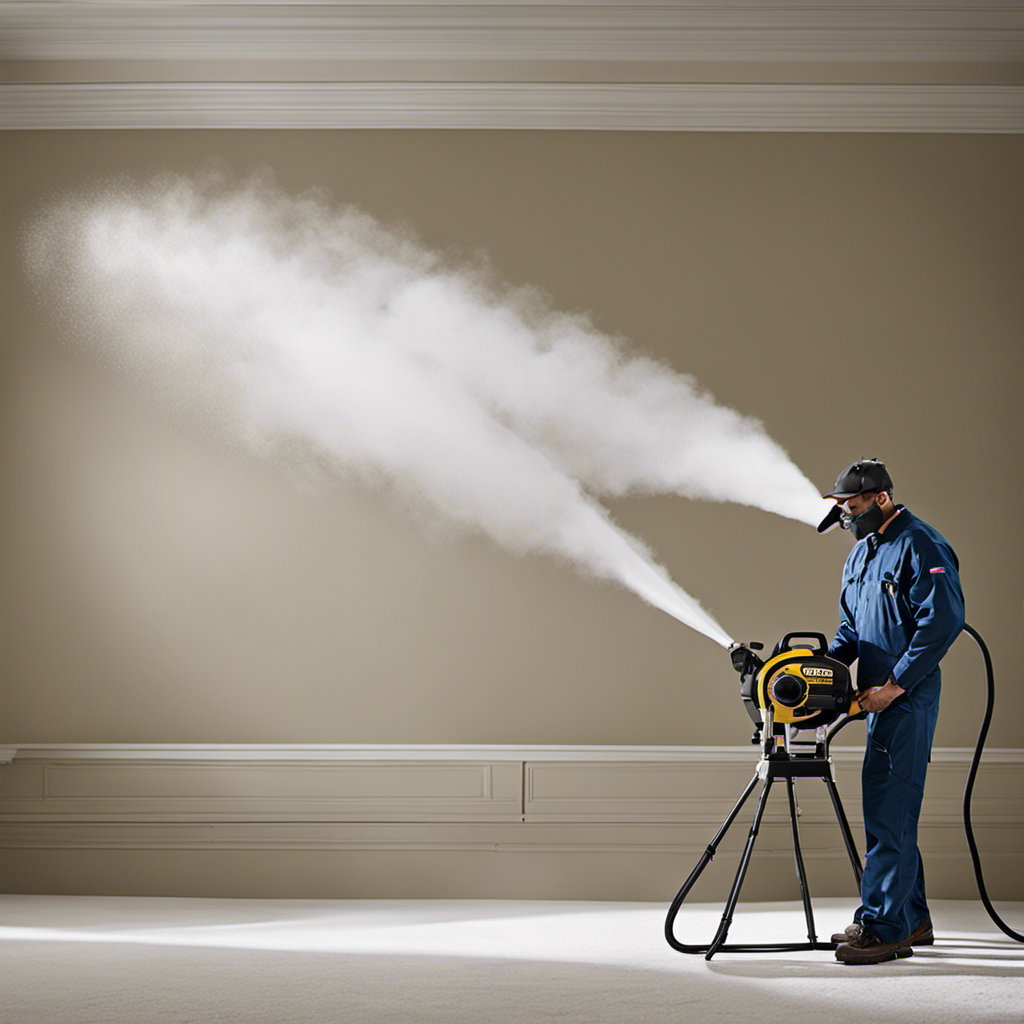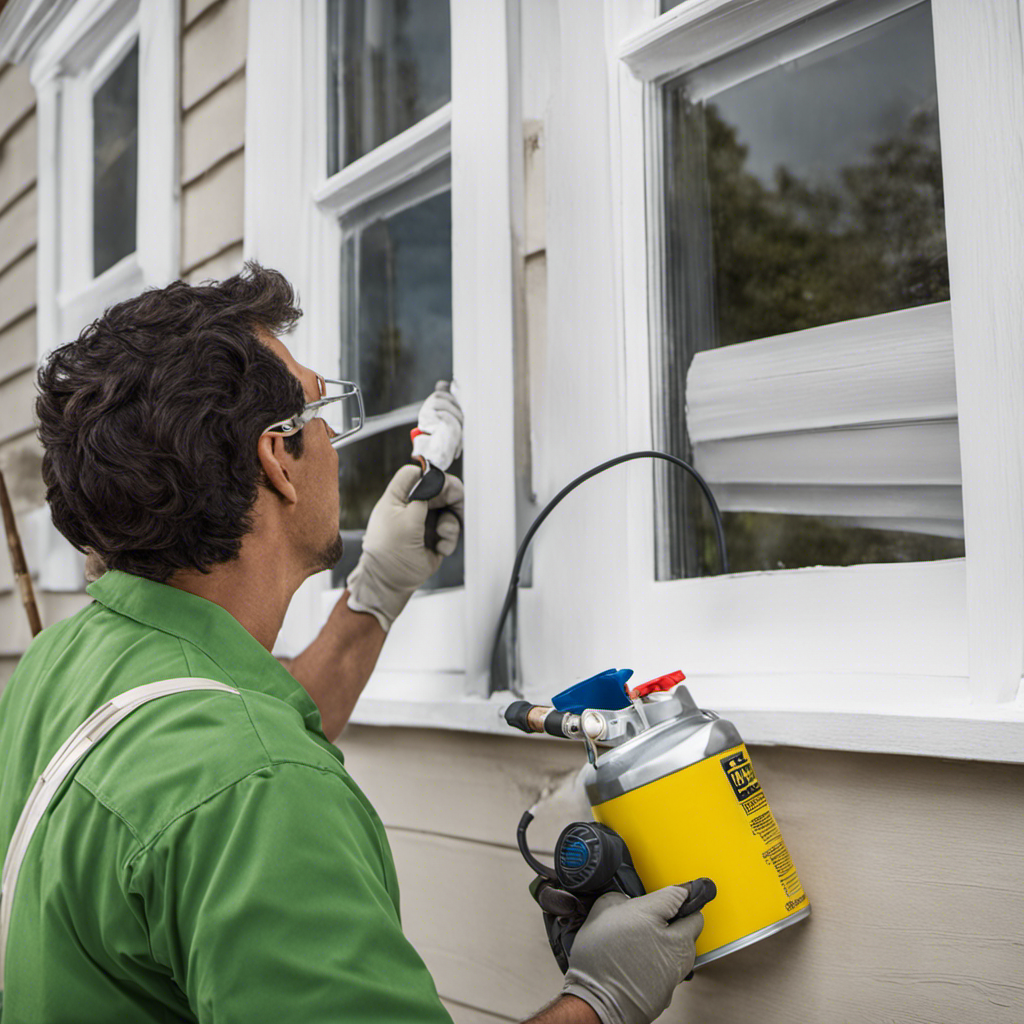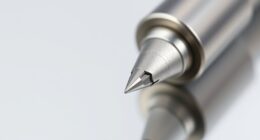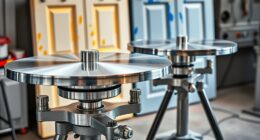Are you thinking about buying a pre-owned airless paint sprayer? It is important to carefully examine and test the equipment before making a final decision to make sure it works well and is reliable.
According to recent studies, nearly 40% of used paint sprayers on the market have hidden defects that can lead to costly repairs or subpar results.
In this article, we will guide you through the step-by-step process of inspecting and testing a used airless paint sprayer, providing you with the knowledge and expertise needed to make an informed purchase.
Key Takeaways
- Exterior inspection is important to check for damage or signs of wear on the paint sprayer.
- Testing the power supply and ensuring it is in good condition is crucial for safe operation.
- Adjusting pressure settings and inspecting the spray nozzle and gun for consistency and clogs is necessary for effective spraying.
- Evaluating the hose and connections for any damage or leaks is essential to prevent any issues during operation.
Exterior Inspection and Power Supply
The user inspects the exterior of the used airless paint sprayer for damage, such as dents, scratches, and signs of wear, while also checking the power supply for any fraying or damage in the cord.
They carefully examine the power cord, ensuring it is securely connected and free from any fraying or damage that could pose a safety hazard.
Moving on, they turn their attention to the motor, checking for any visible signs of damage or wear.
They observe the motor as it runs, listening for any unusual noises or vibrations that could indicate underlying issues.
This thorough inspection ensures that the power supply is in good working condition and that the motor is functioning properly, providing a solid foundation for the next steps in the inspection process.
Pressure Settings and Spray Nozzle
Adjusting the pressure settings and observing the gauge for consistency is an essential step in evaluating the pressure settings and spray nozzle of the airless paint sprayer.
Proper maintenance of the spray nozzle is crucial to ensure optimal performance and prevent clogs or blockages. To maintain the spray nozzle, it is important to periodically clean it to remove any accumulated debris or paint residue. This can be done by soaking the nozzle in a cleaning solution or using a small brush to remove any stubborn particles.
Additionally, pressure adjustment techniques play a significant role in achieving the desired spray pattern and coverage. By adjusting the pressure settings, the user can control the flow rate and ensure an even and consistent application of paint. It is recommended to refer to the manufacturer’s guidelines for specific pressure adjustment techniques for the airless paint sprayer being used.
Pump Operation and Smoothness
To achieve optimal pump operation and smoothness, the user should adjust the pressure settings to the desired level. Maintaining and troubleshooting the pump is essential for efficient and effective paint spraying.
Here are four pump maintenance and troubleshooting techniques to ensure smooth operation:
-
Regularly clean and inspect the pump for any clogs or blockages. Clear them if necessary to prevent any disruptions in paint flow.
-
Check the pump’s seals and valves for any signs of wear or damage. Replace them if needed to prevent leaks and ensure proper functioning.
-
Lubricate the pump’s moving parts, such as the piston and cylinder, to reduce friction and enhance smooth operation.
-
Use a separate pressure gauge to compare readings and ensure accuracy. If there are discrepancies, adjust the pressure settings accordingly.
Hose and Connection Evaluation
Evaluating the hose and connections involves examining their condition and checking for any signs of damage or weakness. Proper hose maintenance and connection inspection are crucial to ensure the efficient and safe operation of an airless paint sprayer. A worn or damaged hose can lead to leaks, reduced pressure, and uneven spray patterns, which can affect the quality of the paint job. Similarly, loose or faulty connections can result in air or paint leakage, leading to inefficiency and potential safety hazards. To assess the hose and connections, visually inspect the hose for cracks, splits, or wear, and check the fittings for tightness and proper sealing. Look for any signs of connection leaks, such as paint or air leakage. It is important to assess the overall integrity of the hose and connections to identify any potential issues that may require repairs or replacements.
| Hose Maintenance | Connection Inspection |
|---|---|
| Visually inspect for damage | Check fittings for tightness |
| Look for cracks or wear | Ensure proper sealing |
| Assess overall integrity | Detect connection leaks |
| Identify potential issues | Address repairs or replacements |
Trigger and Safety Features Verification
The operator verifies the smooth operation of the trigger by testing its ease of pulling and releasing. This is an important step in the inspection and testing of a used airless paint sprayer. By ensuring that the trigger functions properly, the operator can ensure a safe and efficient spraying process.
Here are the testing procedures and safety precautions involved in this step:
-
Test the trigger for smooth operation: The operator should pull and release the trigger multiple times to ensure that it moves smoothly without any resistance or sticking.
-
Check the safety lock mechanism: The safety lock is designed to prevent accidental spraying. The operator should verify that it engages and disengages properly, providing an extra layer of safety.
-
Inspect the pressure relief valve: This valve is responsible for releasing excess pressure, reducing the risk of damage or injury. The operator should ensure that it functions as intended.
-
Examine the tip guard: The tip guard provides an additional safety measure by preventing accidental contact with the spray tip. The operator should check for any defects or damage that may compromise its effectiveness.
During this process, it is important for the operator to follow safety precautions, such as wearing protective equipment and ensuring proper ventilation in the work area. By conducting these testing procedures and taking safety precautions, the operator can ensure the reliable and safe operation of the airless paint sprayer.
Motor and Filter Assessment
After verifying the trigger and safety features of the used airless paint sprayer, the next step in inspecting and testing is assessing the motor and filters.
Motor maintenance is crucial to ensure the sprayer runs smoothly and efficiently. Start by visually inspecting the motor for any visible damage or signs of wear. Listen for any unusual noises or vibrations when the motor is turned on.
Additionally, check the filters for clogging or damage. Clean them thoroughly to ensure proper airflow and prevent any potential issues during painting. Clogged filters can affect the spray pattern and result in an uneven application.
Spray Pattern and Consistency Check
To ensure a smooth and even application, the user should check the spray pattern and consistency of the airless paint sprayer. Here are some steps to follow for spray pattern adjustment and troubleshooting spray consistency:
-
Inspect the spray pattern: Hold the spray gun at a consistent distance from the surface and pull the trigger. Observe the spray pattern for any unevenness or inconsistencies.
-
Adjust the spray pattern if needed: If the spray pattern is uneven, adjust the nozzle or fan width to achieve a more uniform coverage.
-
Troubleshoot spray consistency: Check for any clogs or blockages in the spray nozzle. Clear any obstructions to ensure a consistent flow of paint.
-
Test the spray gun for consistent pressure: Adjust the pressure settings and observe the gauge for consistency. If the pressure fluctuates, investigate and address any underlying issues.
Overall Condition and Performance Evaluation
Evaluating the overall condition and performance of the airless paint sprayer involves assessing its exterior for damage, checking the motor, examining the filters, testing the power supply, and listening for any unusual noises or vibrations.
To evaluate the durability of the sprayer, one should inspect the exterior for any dents, scratches, or signs of wear. The motor should be checked for visible damage or signs of wear, ensuring it runs smoothly. The filters should be examined for clogging or damage, ensuring they are clean and functioning properly.
Testing the power supply involves securely plugging in the cord and checking for fraying or damage. Additionally, listening for any unusual noises or vibrations when the motor is turned on can help assess the functionality of the sprayer.
Frequently Asked Questions
How Often Should I Clean and Maintain the Exterior of the Airless Paint Sprayer?
The exterior maintenance frequency of an airless paint sprayer depends on various factors such as frequency of use and operating conditions. However, it’s generally recommended to clean and maintain the exterior regularly to ensure optimal performance and longevity.
A mild cleaning solution, such as a mixture of mild soap and water, can be used to remove dirt, dust, and other debris from the exterior surfaces. This will help prevent any buildup that could potentially affect the sprayer’s functionality.
What Type of Cleaning Solution Should I Use to Clean the Filters?
To clean the filters of an airless paint sprayer, it’s recommended to use a suitable cleaning solution. Various cleaning products are available specifically designed for this purpose. These solutions effectively remove any paint residue, clogs, or debris from the filters.
It’s important to follow the manufacturer’s instructions and use the recommended cleaning products to ensure optimal performance and longevity of the sprayer.
Regularly cleaning the filters will help maintain the sprayer’s efficiency and prevent any potential issues during operation.
Can I Use the Airless Paint Sprayer With an Extension Cord?
Yes, you can use an extension cord with an airless paint sprayer, but it’s important to take proper safety precautions.
Make sure to use a heavy-duty extension cord that is rated for the electrical load of the sprayer. Avoid using a cord that is too long or damaged, as this can pose a safety hazard.
Additionally, always plug the extension cord securely into a grounded outlet and keep it away from water or other potential sources of damage.
How Do I Adjust the Pressure Settings on the Airless Paint Sprayer?
To adjust the pressure settings on an airless paint sprayer, start by locating the pressure control knob or dial. Turn it clockwise to increase the pressure and counterclockwise to decrease it.
It’s important to make small adjustments and test the spray pattern after each adjustment to ensure consistency.
If you’re experiencing issues with pressure, troubleshooting tips include checking for clogs in the spray nozzle, inspecting the filters for any blockages, and verifying that the motor is running smoothly.
Are There Any Recommended Safety Precautions When Using the Airless Paint Sprayer?
When using an airless paint sprayer, there are several recommended safety precautions to follow.
It is crucial to wear the proper safety gear, including goggles, a mask, and protective clothing, to protect against paint fumes and overspray.
Additionally, using proper painting technique, such as maintaining a consistent distance from the surface and avoiding spraying in windy conditions, can help prevent accidents and ensure a smooth finish.
These precautions are essential for a safe and successful painting experience.
Conclusion
In conclusion, inspecting and testing a used airless paint sprayer is a meticulous process that requires attention to detail.
By carefully examining the exterior, power supply, pressure settings, spray nozzle, pump operation, hose and connections, trigger and safety features, motor and filter, as well as the spray pattern and overall performance, one can ensure the reliability and functionality of the sprayer.
With each step, the suspense builds as the audience envisions the thorough examination and evaluation, resulting in a confident and knowledgeable assessment of the sprayer’s condition and performance.
Drenched in creativity and armed with a fountain pen, Isolde weaves words as gracefully as a painter strokes their canvas. A writer for Paint Sprayer Zone, her passion for colors, textures, and spaces finds a harmonious blend with her profound knowledge of painting tools and techniques.
Having grown up in a family of artists, Isolde’s tryst with paints began early. While her relatives expressed themselves on canvas, Isolde found her medium in words. She dedicated herself to chronicling the world of painting, understanding the nuances of each tool, and the artistry behind every spritz of a paint sprayer.
